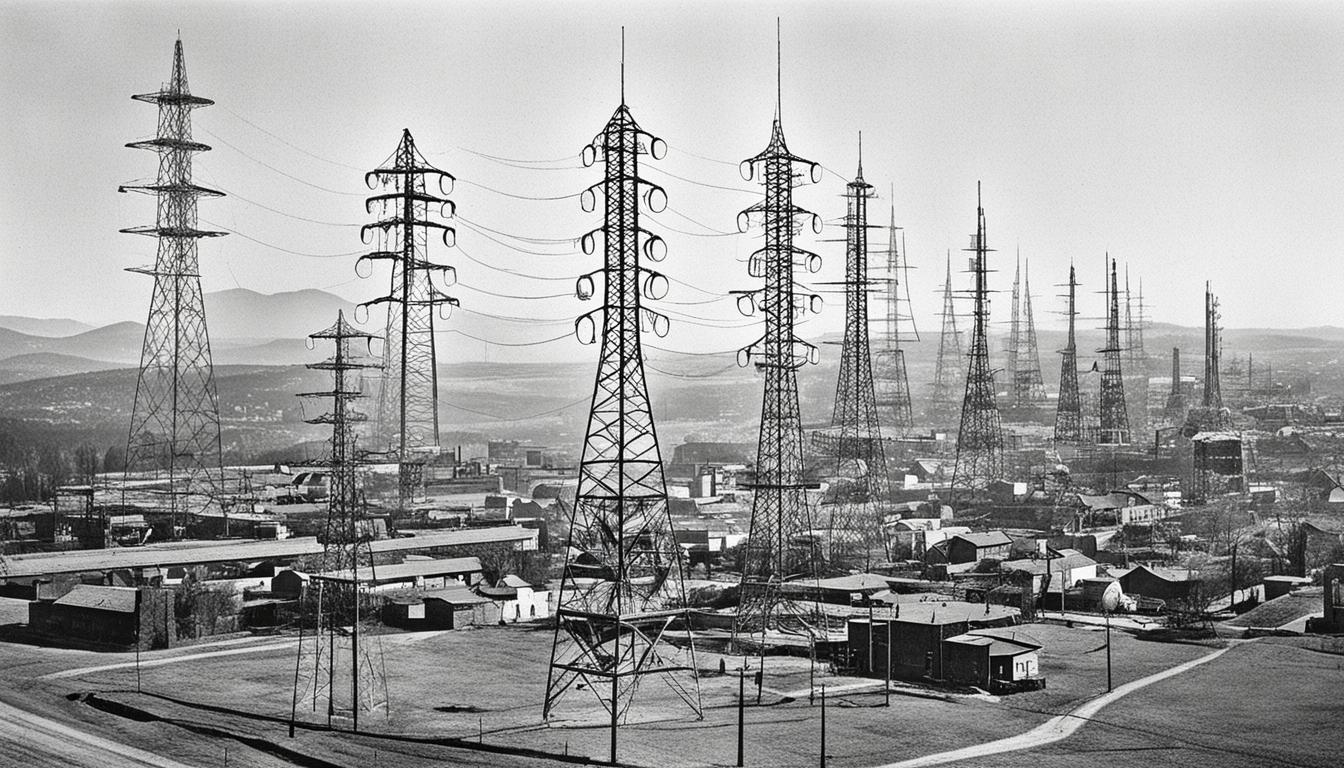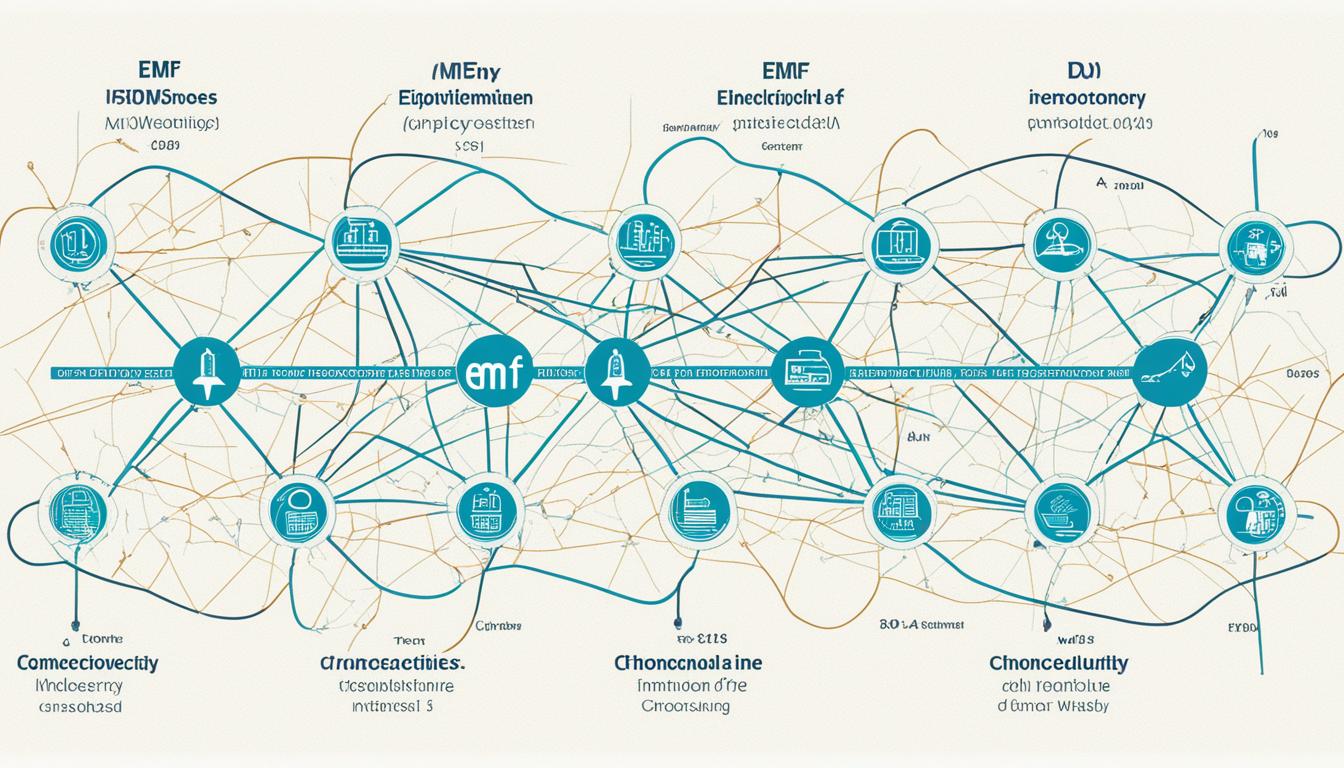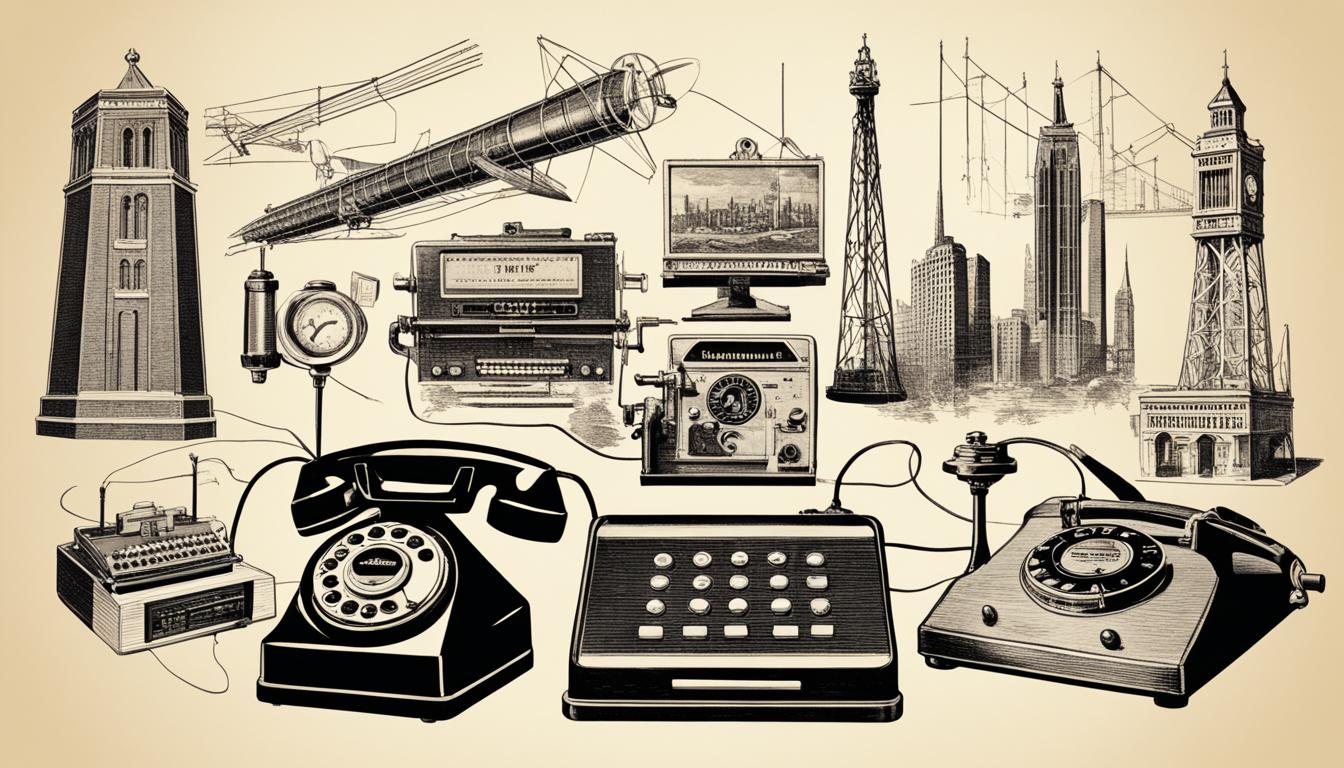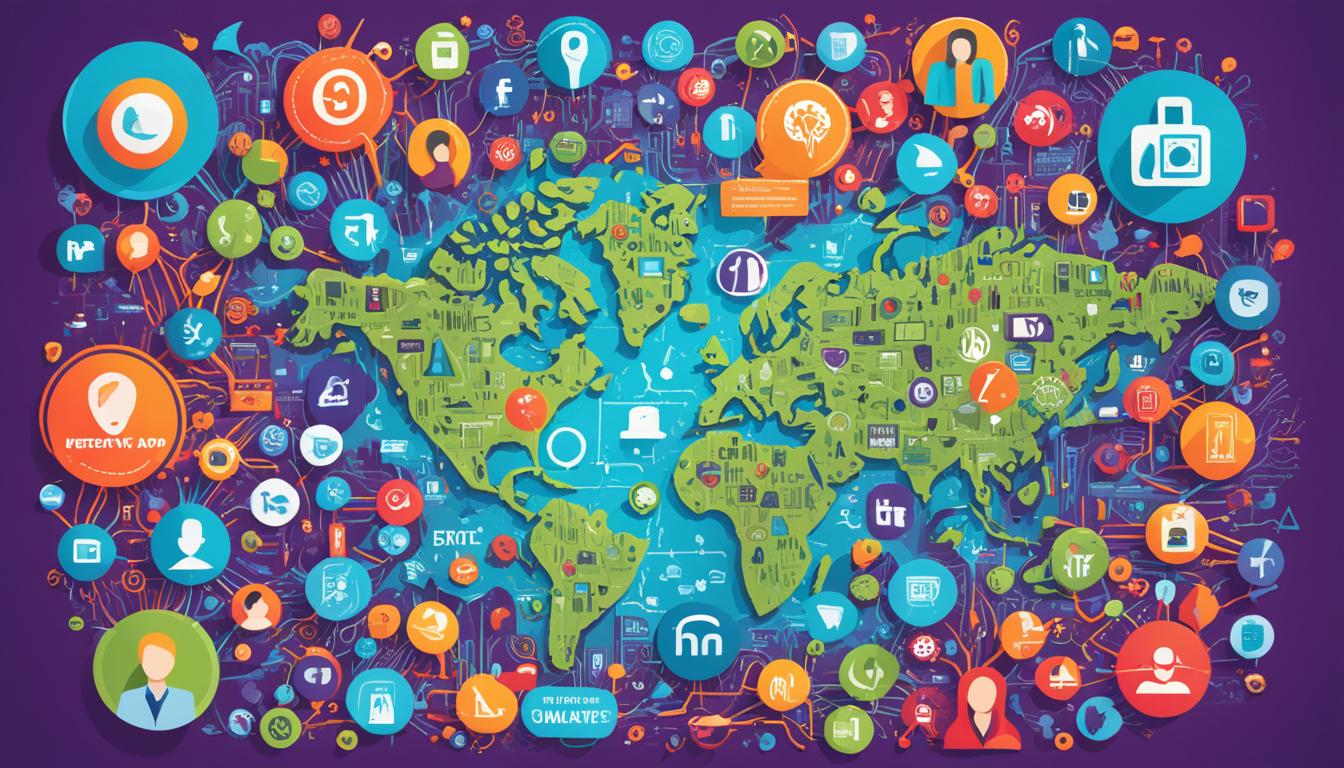Disclosure: This Post Contains Affiliate Links; We earn a commission on purchases.
The development of EMF technology has undergone a fascinating journey throughout history, leading to significant advancements in the understanding and utilization of electromagnetic fields. From ancient observations of static electricity to the digital transformation in EMF technology, the impact of these advancements has been profound.
Key Takeaways:
- EMF technology has a rich history dating back to ancient civilizations.
- Notable scientists like Alessandro Volta, Benjamin Franklin, and James Clerk Maxwell contributed to the understanding and harnessing of electricity and magnetism.
- The rise of electric currents and power generation revolutionized the use of electricity.
- The emergence of radiofrequency fields and communication technologies transformed the way we transmit information.
- EMF technology has permeated various aspects of everyday life and industries.
The Rise of Electric Currents and Power Generation
In the 19th century, the development of direct and alternating current systems revolutionized the use of electricity. Benjamin Franklin’s invention of the lightning conductor and Luigi Galvani’s experiments on electrical processes in living beings paved the way for further discoveries. The invention of the voltaic pile by Alessandro Volta enabled the generation of direct current, and advancements in power generators and electric motors by inventors like Werner Siemens and Thomas Edison allowed for the practical utilization of electricity in various applications. The establishment of power grids and the transmission of electricity over long distances became possible, leading to the widespread adoption of electric lighting and the electrification of industries and households.
With the development of electric currents, power generation took a significant leap forward. The use of direct current (DC) and alternating current (AC) systems allowed for more efficient and reliable electricity distribution. Direct current provides a continuous flow of electric charge in one direction, while alternating current periodically changes its direction.
Direct current became instrumental in powering early electrical systems, with Alessandro Volta’s voltaic pile leading the way as the first practical source of continuous electricity. However, the limitations of direct current, such as power loss over long distances, prompted the invention of the alternator and transformer by pioneers like Michael Faraday and William Stanley. These innovations allowed for the efficient generation and transmission of alternating current, which better suited the needs of expanding power grids and long-distance electricity transmission.
Comparison of Direct Current and Alternating Current
| Direct Current (DC) | Alternating Current (AC) |
|---|---|
| Flows in one direction | Periodically changes direction |
| Used in batteries and low-power devices | Used in power grids and most electrical applications |
| Requires fewer conversion devices for some appliances | Requires conversion devices for most appliances |
| Power loss over long distances | Efficient transmission over long distances |
Power generation also saw advancements in the development of electric motors, which play a crucial role in various industries and applications. Electric motors, driven by electric currents, convert electrical energy into mechanical energy, powering machinery and devices.
Thomas Edison’s contributions to electric power generation and the invention of the practical incandescent light bulb further accelerated the adoption of electricity. He established the first direct current distribution system in New York City, known as the Pearl Street Station, in 1882. This marked a significant milestone in the commercialization of electric power.
Electric motor advancements by inventors like Nikola Tesla and their applications in industries such as manufacturing and transportation propelled the industrial revolution into a new era. Electric motors provided higher efficiency, controllability, and versatility compared to traditional mechanical power sources.
The rise of electric currents and power generation laid the foundation for the widespread use of electricity in modern society. It paved the way for electrification, changing the way we live, work, and interact with technology.
The Emergence of Radiofrequency Fields and Communication Technologies
In the late 19th and early 20th centuries, the focus shifted to the development of wireless information transmission and the understanding of radiofrequency fields. Discoveries made by scientists like Heinrich Hertz and Guglielmo Marconi paved the way for advancements in communication technologies.
“It’s in the transmission of information where the real power of radio lies.”
Heinrich Hertz conducted groundbreaking experiments with electromagnetic waves, confirming the existence of radio waves and establishing the foundation for wireless communication. Guglielmo Marconi, building on Hertz’s work, applied these findings to develop practical applications in radio-telegraph connections.
“Wireless telegraphy is not an invention, neither does it even represent a discovery. It is an art. It is an entirely new art that originated as a happy accident.”
– Guglielmo Marconi
This era also witnessed significant advancements in audio transmission. The invention of the telephone by Philipp Reis and Alexander Graham Bell further expanded the possibilities of speech communication. It was a transformative development that revolutionized communication by enabling people to speak with one another over long distances.
As wireless communication progressed, so did the networks that supported it. The A-network, implemented in Germany, was the beginning of a gradual evolution towards digital mobile networks. Breakthroughs in technologies like UMTS and LTE enabled the transition to more efficient and reliable communication systems.
“With wireless communication, the world gets a little smaller and a lot more connected.”
Today, the impact of electronic and radiofrequency communication technologies is undeniable. The global number of mobile radio connections has exponentially increased, illustrating the profound influence of EMF technology on communication.

| Communication Technology | Date of Invention/Introduction |
|---|---|
| Electric Telegraph | 1837 |
| Telephone | 1876 |
| Wireless Telegraphy | 1895 |
| AM Radio | 1900s |
| FM Radio | 1930s |
| Cellular Networks | 1980s |
The emergence of radiofrequency fields and communication technologies has revolutionized the way we connect, communicate, and share information. These advancements continue to shape our modern world and pave the way for future innovations in wireless information transmission.
The Influence of EMF Technology on Everyday Life and Industry
Beyond communication, EMF technology has revolutionized various aspects of everyday life and industries. The applications of electromagnetic fields have had a profound impact on how we access information, communicate, and interact with our surroundings.
One significant electromagnetic application is in microwave ovens. These appliances use electromagnetic waves to generate heat, allowing for efficient cooking and heating of food. The convenience and speed of microwave ovens have transformed the way we prepare meals in our homes and the food industry as a whole.
Another area where EMF technology plays a vital role is in wireless communication, particularly WiFi. WiFi utilizes radiofrequency fields to wirelessly connect devices to the internet, enabling seamless access to information and communication from various locations. Whether it’s for work, education, or entertainment, WiFi has become an essential part of our daily lives.
EMF technology has also revolutionized the field of radar systems. Radar, which stands for “Radio Detection and Ranging,” uses radio waves to detect and track objects in various applications, including air traffic control, weather monitoring, and military operations. These systems provide critical information for navigation and safety, showcasing the far-reaching impact of EMF technology.
In the realm of satellite communications, EMF technology has revolutionized global connectivity and information transmission. Satellites equipped with communication systems use electromagnetic waves to transmit signals across vast distances, supporting critical functions such as television broadcasting, internet connectivity, and global positioning systems.
EMF technology finds applications beyond communication as well. It is used in navigation systems, position finding, remote control devices, therapeutic treatments, measurement instruments, heating systems, and the transmission of sound, images, and data in various industries.
EMF technology has become an intrinsic part of everyday life, impacting sectors such as healthcare, transportation, telecommunications, and entertainment. Its applications have contributed to advancements and improvements across multiple fields, enhancing efficiency, convenience, and connectivity.
To provide a comprehensive overview of the impact of electromagnetic applications, the following table highlights some key areas where EMF technology has transformed our lives:
| Electromagnetic Applications | Impact |
|---|---|
| Microwave Ovens | Efficient cooking and food heating |
| WiFi | Seamless wireless communication and internet access |
| Radar Systems | Enhanced navigation, air traffic control, and weather monitoring |
| Satellite Communications | Global connectivity, television broadcasting, and internet services |
| Navigation, Remote Control, Healthcare | Efficient systems, precise positioning, and advanced medical treatments |
From everyday gadgets like microwave ovens and WiFi, to critical systems in radar and satellite communications, EMF technology has reshaped the way we live and work. Its advancements continue to drive innovation and pave the way for a more connected and technologically advanced future.
The Ubiquity of EMF Technology in Everyday Life
EMF technology is now an integral part of modern society, with its influence extending to diverse sectors. Let’s explore some of the everyday applications where EMF technology is making a significant impact:
- Healthcare: EMF plays a crucial role in medical imaging systems like Magnetic Resonance Imaging (MRI) and Positron Emission Tomography (PET) scans, enabling non-invasive diagnosis and treatment planning.
- Transportation: EMF technology is vital in vehicle navigation systems, providing real-time directions and optimizing routes for efficient travel.
- Entertainment: From broadcasting television signals to streaming online content, EMF technology enables seamless audiovisual experiences.
- Security and Surveillance: EMF-based systems like closed-circuit television (CCTV) and motion sensors enhance safety and monitoring in various settings.
As technology advances and new applications emerge, the influence of EMF technology in everyday life and industry will continue to grow, bringing forth exciting possibilities and transforming the way we live and interact with the world.
The Advancements and Innovations in EMF Technology
EMF technology is constantly evolving and undergoing innovative developments. With its widespread applications in areas such as wireless communication, the Internet of Things (IoT), and renewable energy, EMF systems continue to shape the way we live and work.
“The integration of EMF technology with emerging fields like artificial intelligence and machine learning has opened up new possibilities for creating cutting-edge solutions,” says Dr. Emily Johnson, a leading researcher in EMF technology.
One of the latest EMF tech developments is the advent of 5G networks. These networks offer unprecedented speed and reduced latency, revolutionizing how we connect and interact online. With the ability to handle massive data transfer and support advanced applications like autonomous vehicles and smart cities, 5G networks are at the forefront of evolving EMF systems.
Another significant innovation in EMF technology is the implementation of smart grids. These intelligent energy distribution networks optimize the use of electricity, enable seamless integration of renewable energy sources, and provide real-time monitoring for efficient energy management.
The advancements and integration of EMF technology with other emerging fields have paved the way for more intelligent and efficient systems. Researchers and engineers are constantly pushing the boundaries to meet the evolving demands of a digital and interconnected world. They are exploring new ways to harness the power of EMF technology and develop solutions that are not only technologically advanced but also environmentally sustainable.
Take a look at the following table showcasing the cutting-edge EMF technologies and their applications:
| EMF Technology | Applications |
|---|---|
| 5G Networks | High-speed wireless communication, IoT connectivity, autonomous vehicles |
| Smart Grids | Efficient energy distribution, integration of renewable energy, real-time monitoring |
| Wireless Sensor Networks | Environmental monitoring, industrial automation, healthcare applications |
| RFID Technology | Supply chain management, asset tracking, contactless payment |
These cutting-edge EMF technologies are revolutionizing industries and enabling transformative advancements in various sectors. From healthcare to transportation, from agriculture to manufacturing, EMF systems are driving innovation and shaping the future.
As the world becomes increasingly dependent on technology, the advancements in EMF technology will continue to play a pivotal role in our daily lives. With ongoing research and development, the future holds even more promising breakthroughs in EMF technology, paving the way for a more connected, sustainable, and technologically advanced society.

Conclusion
The evolution of EMF technology has been a remarkable journey, driven by scientific exploration, experimentation, and innovation. From the ancient observations of static electricity to the development of modern EMF solutions, the progress in electromagnetic field technology has revolutionized every aspect of our lives. With the industry continuously advancing, the emergence of next-gen EMF innovations promises to bring even more transformative changes.
Today, we witness the profound impact of EMF technology in reshaping industries, driving digital transformation, and paving the way for a more connected and technologically advanced future. The EMF industry progress has led to the development of cutting-edge solutions that have not only improved communication and information access but also revolutionized various sectors, from healthcare to transportation.
As we look ahead, the next-generation EMF innovations will open new possibilities, pushing the boundaries of what is achievable. With evolving wireless communication systems, the rise of the Internet of Things (IoT), and the integration of AI and machine learning, we are on the cusp of a new era of EMF technology. These modern EMF solutions hold immense potential to address emerging challenges and make our lives even more convenient and efficient.
In conclusion, the continuous evolution of EMF technology has propelled us into a future where connectivity and technological advancements are inseparable. The progress made in the EMF industry, along with the promise of next-gen EMF innovations, drives us towards a world that is more interconnected, efficient, and technologically advanced.
Source Links
- https://www.britannica.com/science/electromagnetism/Faradays-discovery-of-electric-induction
- https://www.emf-portal.org/en/cms/page/home/technology/general/historical-review
- https://en.wikipedia.org/wiki/History_of_electromagnetic_theory

Subscribe to Our Newsletter










